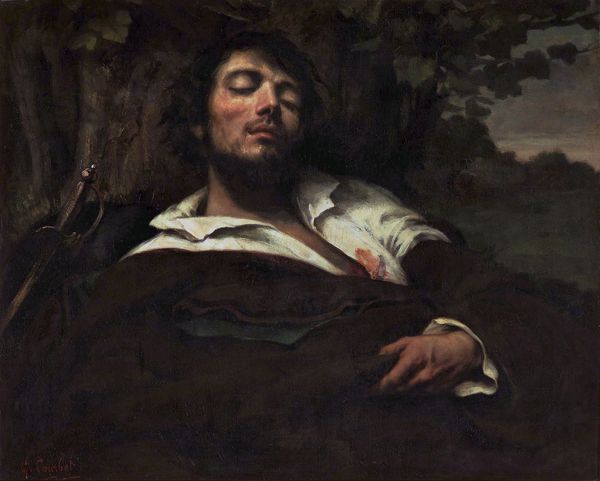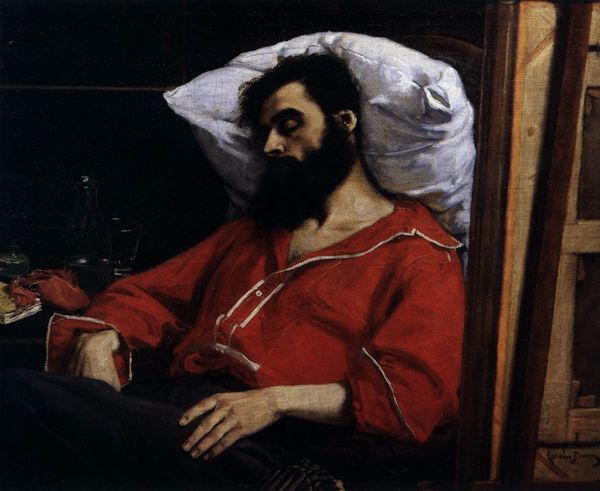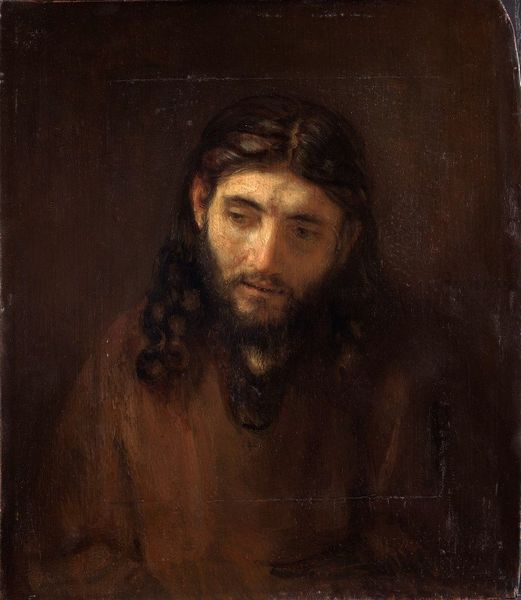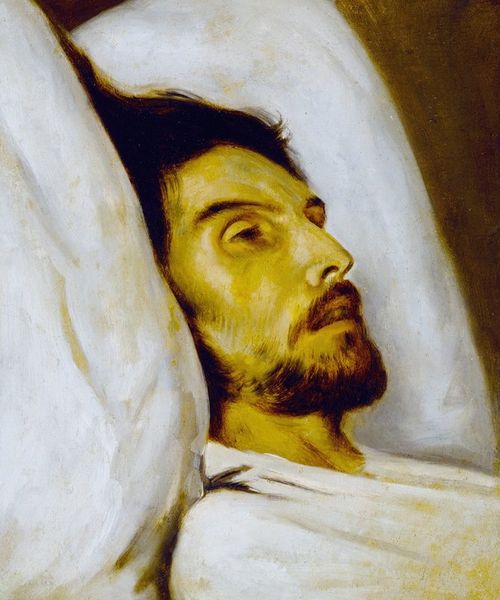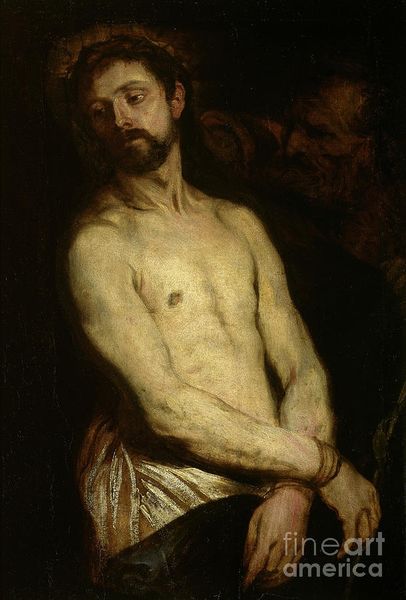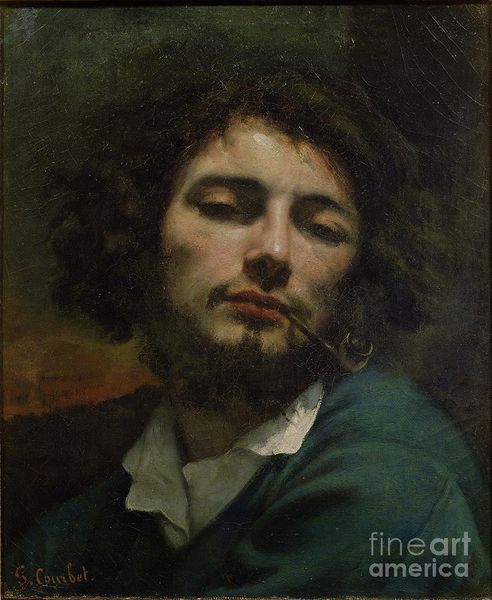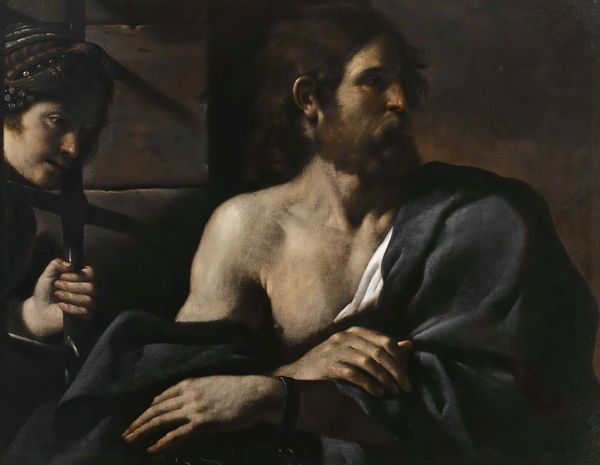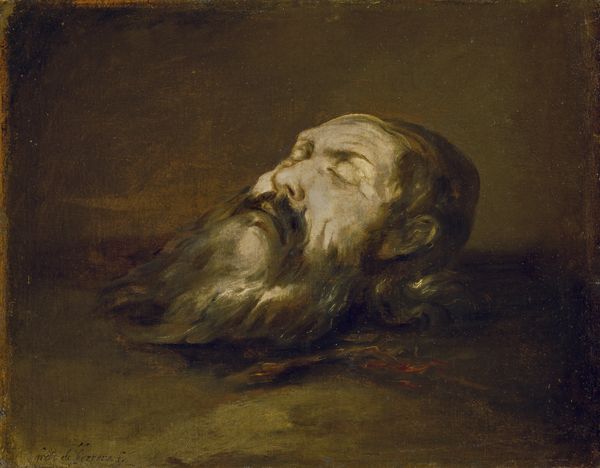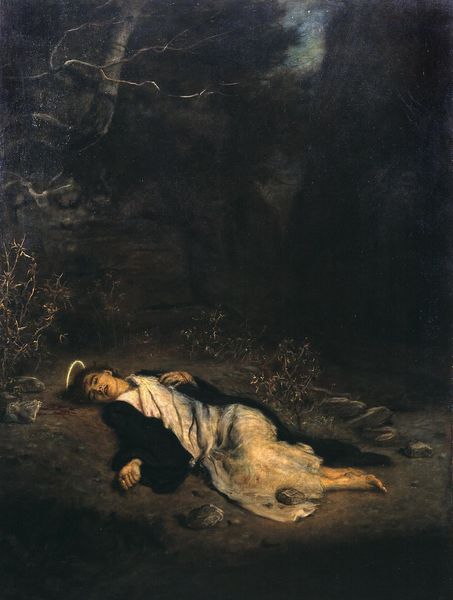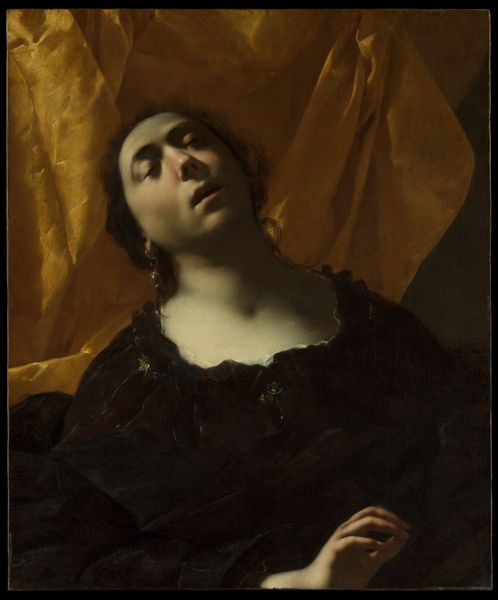
Copyright: Public Domain: Artvee
Curator: Alright, let's spend some time contemplating "The Wounded Man," or "Der Verwundete," by Gustave Courbet, an oil painting completed in 1866. Editor: What a powerful image, it feels heavy. There’s such vulnerability emanating from this figure with his eyes closed; it’s like peering into a fragile moment. The colors are muted, as though everything has quieted down. Curator: It certainly evokes strong emotion. Art historians situate this piece within the context of Courbet's involvement in radical politics. Post-1848 revolutions saw increased artistic engagement, often reflecting solidarity with the plight of ordinary people, especially those impacted by social and political upheaval. Editor: Interesting... The visible wound disrupts the seemingly peaceful repose. His partially open shirt hints at his pain and fragility. It makes me question the narrative of heroism and strength so often portrayed in art. This seems so much more real and affecting. Curator: Indeed. While appearing as a portrait, it leans into history painting through its depiction of a wounded man with a visible sword by his side. There are art historical arguments interpreting the figure as a self-portrait reflecting his own disillusionment. Perhaps wounded in spirit by political setbacks? Editor: Maybe it's the contrast of the soft brushstrokes with the harsh reality of his injury, but it leaves you contemplating the cost of commitment, whether to a cause, to love, or even to one's self. I mean, just look at the way the light catches on his face, even in this state he radiates strength, and resilience...or maybe stubbornness! Curator: I see your point about resilience. The Romantic elements shine here too; the artist capturing raw emotional intensity, especially exploring themes of suffering and human vulnerability. Even the natural backdrop enhances the scene's contemplative mood. Editor: Exactly. I walked into this room and just wanted to sit with this piece and think. It whispers tales of battles fought, wounds both visible and invisible. This is less about glory and more about aftermath. Curator: I appreciate how you've highlighted the artwork's enduring power, moving beyond literal interpretations to its universal relevance. Editor: Totally. For me, art should resonate, ask questions. It’s achieved both.
Comments
No comments
Be the first to comment and join the conversation on the ultimate creative platform.
